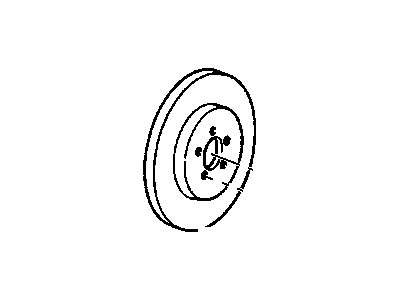
My Garage
My Account
Cart
Genuine Saturn Vue Brake Disc
Disc Rotor- Select Vehicle by Model
- Select Vehicle by VIN
Select Vehicle by Model
orMake
Model
Year
Select Vehicle by VIN
For the most accurate results, select vehicle by your VIN (Vehicle Identification Number).
3 Brake Discs found
Saturn Vue Rear Brake Rotor
Part Number: 20892952$109.52 MSRP: $203.60You Save: $94.08 (47%)Ships in 1-2 Business Days
Saturn Vue Brake Disc
The Brake Disc is utilized in Saturn Vue cars and is a crucial component of the disc brake system, specifically, the part of this system that gives the necessary friction as to ensure the respective slowing or stopping of the vehicle. Attached at the axle or the hub, the rotor interacts with brake pads and calipers, through the use of hydraulic pressure, the caliper squeezes the pads into the surface of the rotor needed to provide the necessary friction. Through the past years, Saturn Vue models have incorporated different kinds of Brake Discs namely the solid and vented types. As illustrated from the following two pictures, vented rotors that consist of cooling fins increase heat dissipation capability than solid rotors that are commonly used in small non performance cars. Most rotors are made out of cast iron, however, some types could be used composites to enhance its functioning. It's imperative that the Brake Disc should be inspected on regular basis that can have scoring, warping and the excessive runout then the optimal solution is direct replacement to provide the safe and optimal performing Saturn Vue future.
Each OEM Saturn Vue Brake Disc we offer is competitively priced and comes with the assurance of the manufacturer's warranty for the part. Furthermore, we guarantee the speedy delivery of your orders right to your doorstep. Our hassle-free return policy is also in place for your peace of mind.
Saturn Vue Brake Disc Parts Questions & Experts Answers
- Q: How to properly replace and install a brake disc on Saturn Vue?A:Remove the wheel and tighten the lugs on top of the wheel, lift the car and put jack stands on it. Bolt the wheel and tighten the lug nuts to immobilise the disc onto the hub flange if the protruding part of the lug nuts does not come into contact with the disc when tightened, place spacers beneath it. What you have to do is, take out the brake caliper but the brake hose stay connected and then you suspend the caliper/bracket out the way with wire. Depress the two bolts holding the caliper mounting bracket to the steering knuckle, let the disc shift off once the bracket is unstated. The disc surface must also be inspected for score marks and the general disc surface unfortunately some a mere scratching and grooving that should be corrected on each disc is normal while deeper scoring needs refinish on the automotive machine shop. If pulsating is present during brake application then disc run out is probable. To check run out, tighten the disc with lug nuts and washers if required and then place one's dial indicator approx ¾ inch of the outer periphery of the disc. Place the indicator at zero and rotate the disc without allowing the reading to go beyond the allowable run out value; if the reading goes beyond the latter then, the disc should be refinished. To avoid conditions where the brake pedal is pulsating some technicians advise replacing the discs with new ones if they are going to replace the Brake Pads. Of equal importance is that, the disc should not be machined to a thickness of less than the minimum that is cast or stamped into it and which can be measured with a micrometer. Place the disc in the relation to the hub before pulling it off, and trim off the wave washers if used. If the working disc is fixed, then the disc is glazed and requires either a tap with a mallet or penetrating oil on the friction surface except. This area should be 'de-gunked' and any rust removed from the inner opening of the disc and the hub area with fine emery paper before refitting can be carried out. Position the disc over the threaded studs and place it in position where the mark is placed, then fit the caliper mounting bracket and the caliper and tightened the bolts to the recommend torque limit. The caliper mounting bracket bolts are of the self-locking type; therefore, do not remove dirt from threaded holes or bolts. Last but not the least, fix the wheel in place and the lugs nuts required for the process be tightened to the recommended torque. Press or push down the brake pedal a few times to wear the brake pads against the disc and then examine the brake carefully before running the car.













